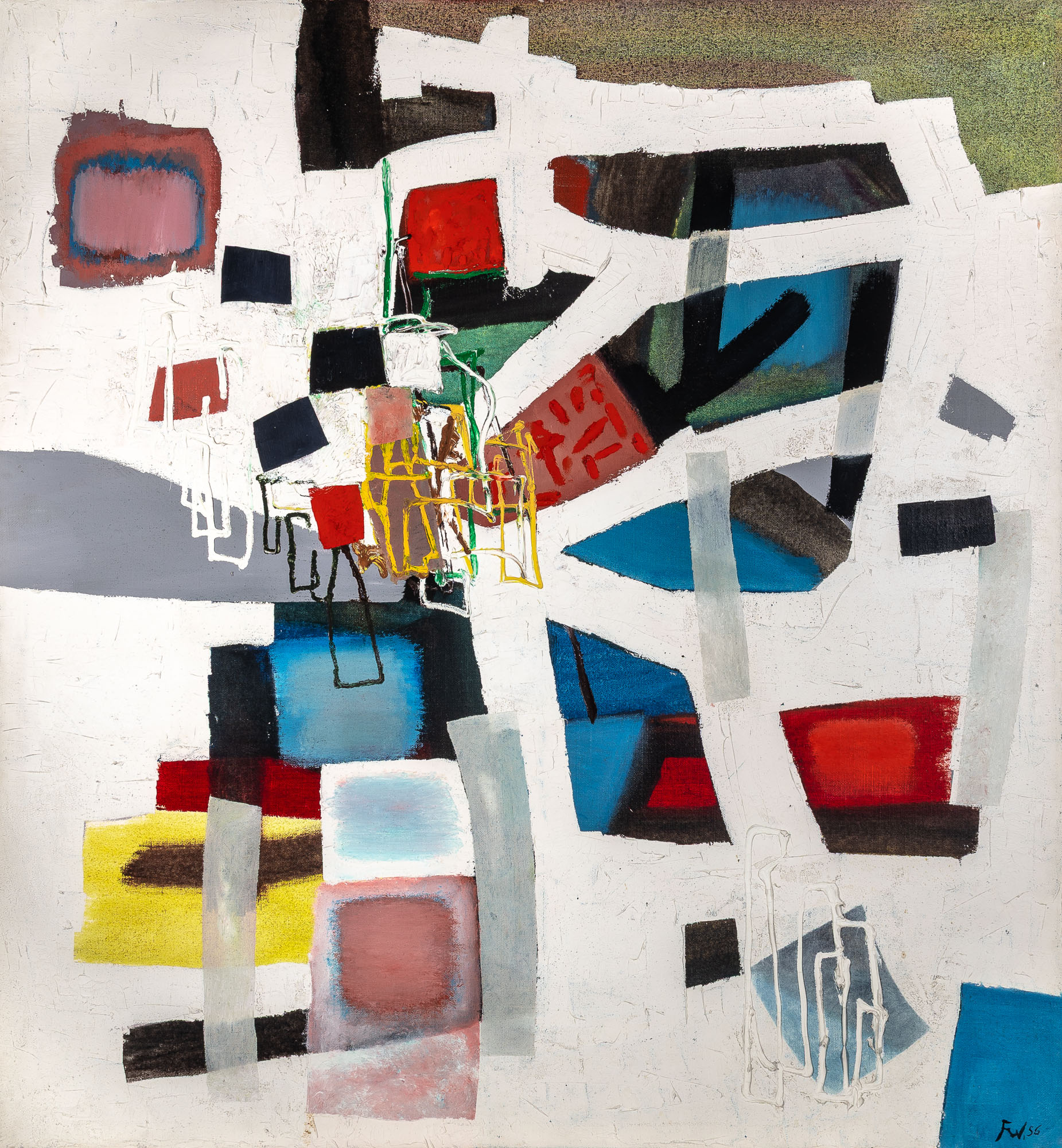
Fritz Winter
German, 1905-1976
Fritz Winter stands as a leading voice in postwar German abstraction, celebrated for his vibrant, emotionally charged works. Born in Altenbögge in 1905, his interest in art was sparked by early travels to the Netherlands and Belgium. He later studied at the Bauhaus in Weimar under modernist icons including Vasily Kandinsky and Paul Klee. His time there not only shaped his formal understanding of color and structure, but also introduced him to the idea of art as a means of spiritual renewal. While influenced by Constructivism and Expressionism, Winter consistently sought a visual language that could transcend ideology.
Drafted into the German army during World War II, Winter continued to sketch amid the turmoil. After the war, his painting turned toward colorful abstraction. In 1949, he co-founded the Gruppe der Gegenstandslosen, a collective championing non-objective art as a path to freedom in postwar Germany. He exhibited at the Venice Biennale in 1950 and at the first documenta in Kassel in 1955, solidifying his role in European modernism.
Winter’s artwork endures through his distinct blend of Bauhaus structure and expressive freedom and can be found in major collections across Europe and the U.S.

